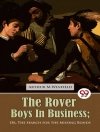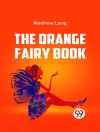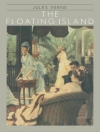The James Joyce Collection – 5 Books in One Edition offers an expansive exploration of one of modernist literature’s most iconic figures, presenting a comprehensive selection of Joyce’s seminal works. This collection includes masterpieces such as ‘Ulysses, ‘ ‘A Portrait of the Artist as a Young Man, ‘ and ‘Dubliners, ‘ which collectively showcase Joyce’s innovative narrative techniques, intricate symbolism, and rich character development. Through stream-of-consciousness prose and profound philosophical undercurrents, Joyce deftly captures the complexities of human experience, particularly within the context of early 20th-century Ireland. This edition not only illuminates his stylistic evolution but also serves as a vital historical document reflecting the socio-political landscape of Joyce’s time. James Joyce, an Irish novelist and poet, is celebrated for his pivotal role in the modernist literary movement. Born in 1882 in Dublin, his profound connection to his homeland deeply influenced his writing. His groundbreaking experimentation with language, structure, and consciousness was shaped by his experiences navigating the tensions of identity, nationalism, and artistic expression. Joyce’s works often reveal his discontent with societal norms, illuminating his quest for personal and artistic freedom. This collection is highly recommended for both seasoned readers and newcomers to Joyce’s work. It not only serves as an essential introduction to his literary genius but also provides invaluable insights into the human condition, making it a critical addition to any literature enthusiast’s library.
Circa l’autore
James Joyce (1882–1941) stands as a towering figure in the world of modern literature, renowned for his intricate narrative techniques and the psychological depth of his work. Born in Dublin, Joyce’s early education at Jesuit schools shaped his complex relationship with both religion and Irish culture, elements that would pervasively inform his writing. Although he spent much of his adult life abroad, Joyce’s native Dublin would be the heart of his literary universe, meticulously recreated in his works. His oeuvre, while not voluminous, is considered by scholars and readers as highly influential, contributing fundamentally to the stream of consciousness technique. Joyce’s ‘THE JAMES JOYCE COLLECTION – 5 Books in One Edition’ would typically encompass his major works including ‘Dubliners’ (1914), a series of short stories that capture the paralyzing stagnancy of Joyce’s Dublin; ‘A Portrait of the Artist as a Young Man’ (1916), a semi-autobiographical novel exploring the artistic awakening of its protagonist, Stephen Dedalus; ‘Ulysses’ (1922), often hailed as his magnum opus, which intricately parallels the structure of Homer’s ‘Odyssey’ in an ordinary Dublin day; and ‘Finnegans Wake’ (1939), Joyce’s final novel notable for its experimental use of language. His literary achievements extend beyond his narrative inventiveness; they incorporate his mastery in manipulating language and formulating a distinctly modernist linguistic experience. Joyce’s commitment to diving into the consciousness of his characters, coupled with his innovations in language and structure, have left an indelible mark on twentieth-century literature and continue to challenge and inspire readers and writers alike.












